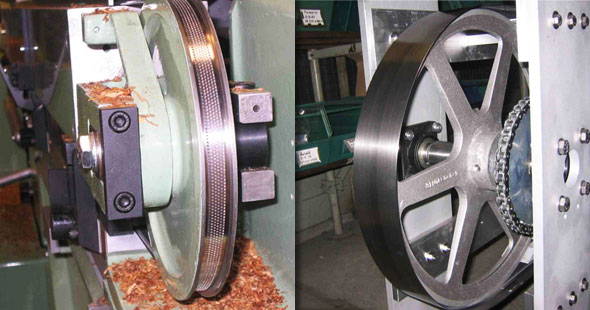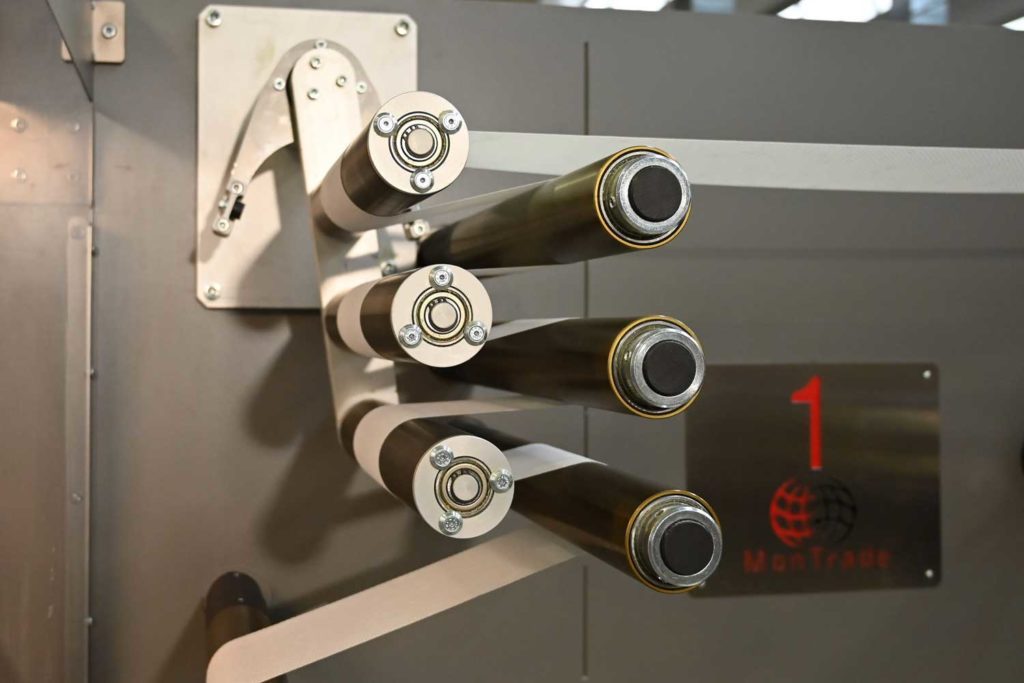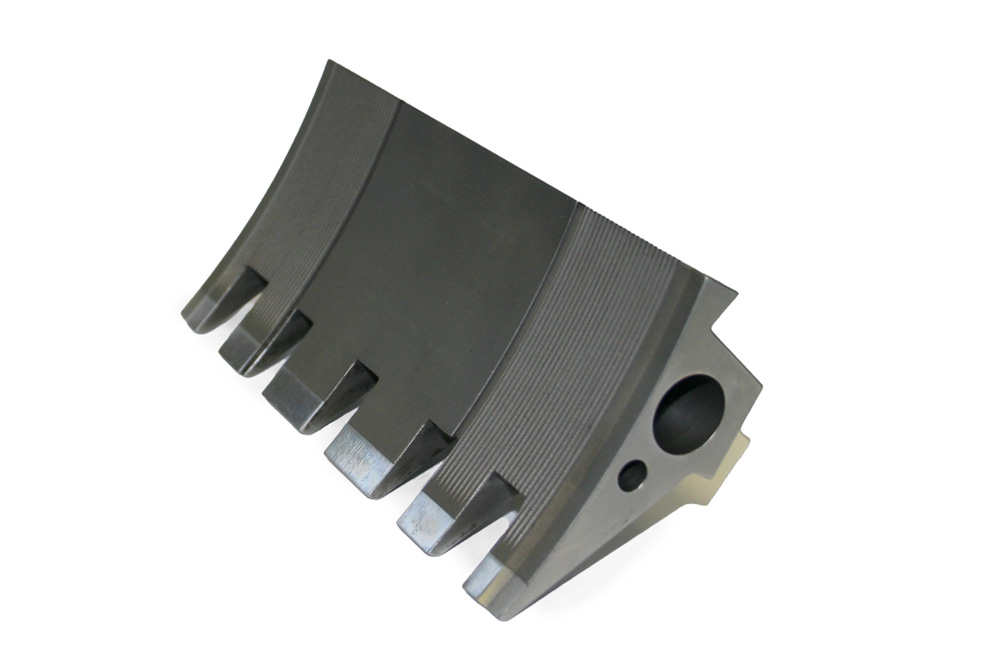Staying Ahead
- Print Edition Technology
- October 1, 2021
- 0
- 1
- 13 minutes read


In today’s hypercompetitive environment, tobacco companies expect suppliers to enable them to develop attractive products while controlling cost and meeting government regulations. Tobacco Reporter spoke with three suppliers of tobacco-related machinery and asked them what they are doing to help their customers stay ahead of the competition.
Cleaning up nicely: Belt Technologies on the Advantages of Stainless Steel Belts.
The Covid-19 pandemic has left us all more aware than we once were about the necessity of paying attention to, among other things, the cleanliness of surfaces; so, as part of its machinery feature, Tobacco Reporter took the opportunity of engaging in an email exchange with Brian Harbison, managing director of Belt Technologies Europe, about his company’s metal belts and tapes, which have been promoted in part on the basis that metal provides a more hygienic surface than that of other materials.
Tobacco Reporter: Do you think that, in the wake of Covid-19, demand from the tobacco and nicotine industry for Belt Technologies’ metal belts and tapes will increase?
Brian Harbison: We have been helping the tobacco industry in the manufacturing process for more than 20 years. Our PureSteel metal belts do not require lubrication and do not outgas, eliminating the risk of contamination. Also, unlike other belt materials, stainless steel does not fray or generate particulates that could get into the tobacco and contaminate it. There has always been a push to maintain cleanliness in tobacco production and packaging to preserve purity, but I think now more than ever it’s at the top of consumers’ minds due to the pandemic.
I take it that increased demand for such conveyor systems will arise in respect of some of the other industries the company serves, such as the food industry.
Absolutely. The food industry has had to pivot during the pandemic to ensure its processes are as safe and sanitary as possible. Our PureSteel conveyor belts are excellent for cooking, freezing and handling edible products, offering a variety of benefits over belts made from materials, such as plastic or rubber. Metal belts do not require lubrication, so there is no risk of chemicals tainting the food. Additionally, stainless steel is resistant to bacteria, making it easy to clean and in compliance with even the strictest USDA [U.S. Department of Agriculture] requirements.
Has it generally been the case that, when looking at factory conveyor systems, the tobacco and nicotine industry has prioritized cleanliness in the past?
Yes, in the time we have been working with the tobacco industry, hygiene has been a top priority. Since people place tobacco products in their mouths, eliminating the presence of potentially harmful bacteria at all points of contact, from handling raw tobacco to the rolling and packaging process, is paramount.
From the point of view of cleanliness, in what parts of the processes involved in the production of tobacco and nicotine products is it most important to employ metal conveyor systems?
Our belts can really be used to make any part of the process more sanitary. In the primary stage of tobacco processing, which is the bulk handling of raw, unprocessed tobacco, our metal belts ensure the product does not become contaminated with bacteria or other foreign matter. And when it comes to the secondary processing of tobacco, our stainless steel suction bands, used in the production of cigars and cigarettes, are available in a range of sizes and surfaces. The benefit of using a metal belt in this stage is the ability to keep the material that will touch the mouth free of contaminants and bacteria while still processing at top speed.
Cleanliness is not the only characteristic on which Belt Technologies promotes its metal belts. Another, I notice, is durability. Again, this durability, along with metal’s usually good recycling credentials, seems to be currently more important than ever, given the environmental problems we are suffering.
Stainless steel has a low thermal coefficient of expansion, enabling greater resistance to extreme temperatures, and it’s also corrosion resistant and vacuum compatible. Inferior materials, such as plastic, rubber or cloth will warp, burn or fall apart when subjected to the same high temperatures metal belts can withstand, and similarly, will shrink or become brittle in extreme cold while metal belts thrive. Stainless steel has a tensile strength ranging from 180 KPSI to 300 KPSI (thousand pound force per square inch), depending on the alloy and temper of the metal. That means relatively thin and lightweight belts can be designed to handle the stresses of almost any application. The high strength and low weight enable the conveyor’s input horsepower to be directed toward moving the product and not the belt, which boosts efficiency and reduces operating expenses. Simply put, metal belts are stronger and more efficient than the alternatives.
The tobacco industry seems to be evolving. Does Belt Technologies see fewer or more opportunities ahead as the production of tobacco products gives way gradually to lower-risk products, particularly oral products?
We have such a wide variety of products that can be used in various ways; we foresee being able to work in the tobacco industry no matter what pivots they make. Our custom solutions can be fabricated to the customer’s exact specifications, so even if one of our existing belts didn’t fit their needs, we could create one that would.
Would you like to tell me anything else?
Metal belts, timing belts and drive tapes are superior, high-quality options for automated production and robotic facilities. Belt Technologies has been producing custom metal belt conveyor solutions for new and existing conveyor systems for more than five decades. Sophisticated engineering, advanced manufacturing processes and an unlimited variety of configurations and coatings are available to custom design belts to suit any application. –G.G.
Montrade—Reimagining Product Assembly

Some of the most interesting and innovative developments being applied to the machinery that will manufacture the tobacco products of the future, along with their derivatives, are unknown to those of us who are not intimately involved in those developments. This is understandable. The competitive nature of the tobacco and nicotine product business means that, often, manufacturers work confidentially with machinery suppliers to come up with new or redesigned equipment that will allow them to manufacture products capable of standing out in the marketplace.
This has not always been the case. Before filters were added to cigarettes, the differentiation of products was mostly down to their taste, and so the secrecy surrounding manufacture was almost entirely down to tobacco blends. But once filters were added, for a number of reasons, the focus moved from the blend to other things.
I got to thinking about these things during an email exchange with Emanuele Massari, senior sales manager at machinery supplier Montrade, who described how his company had previously reimagined the process of making nonwrapped acetate (NWA) filters, allowing a product design innovation. The invention of the new process, which is covered by a number of Montrade patents, led to the design and development of an innovative machine, the MONO NWA, to manufacture the filter in line with the new process. Montrade’s MONO NWA, Massari said, was still a reference point for the filter market and continued to be the only filter maker capable of producing, at high speed, tubes (hollow acetate tubes) with extra-thin walls of 0.5 mm.
Currently, Montrade, which supplies machines for manufacturing heat-not-burn sticks, from the base rod makers, including the tobacco portion, to the combiners that assemble the final products, says it is partnering with several clients in investigating other new-generation products. “We are working on some very interesting and innovative projects, which are still at a confidential stage,” said Massari.
Meanwhile, over the years and up to the present day, Montrade has directed some of its innovative thinking at the environment. Fifteen years ago, before such thinking went mainstream, it built the first version of its paper crimper, a move that was to pay off commercially as well as environmentally. “We have been recognized by many customers, both multinationals and independents, as the preferred OEM for paper filter equipment, establishing ourselves as the clear leader in this sector,” said Massari. —G.G.
Independent Solutions: Achieving Engineering Goals in the Most Cost-Effective Manner

If a company operates in a fast-moving consumer goods market sector, change is almost certainly part of its DNA because change is an important strand of the competitive thread that binds it to success. And if a company operates in the tobacco sector, change tends to loom even larger because it is driven not only by competitive issues but also by regulatory ones.
The problem is that change can be expensive and there is little point in changing to stay ahead of the competition and regulations if it means you lose money. So how do you engineer the changes you need without breaking the bank?
Tobacco Reporter in August put this question to Norbert Schulz-Nemak, sales manager at TMQS, a German machinery company that takes a flexible approach in helping tobacco manufacturers attain their various goals. Tobacco manufacturers needed to undertake frequent changes in their product portfolios, he wrote in an email exchange, and, in some cases, their existing machinery might not be such that it could be efficiently reconfigured to accommodate these changes, which might require anything from a minor to a major conversion.
“If a manufacturer is faced with a new requirement and asks an OEM [original equipment manufacturer] about the solution, this usually leads to the buying of new machinery that is equipped or specifically designed for such a task,” said Schulz-Nemak. “This helps, but it is certainly an extremely costly exercise.”
Given this, TMQS says it is working with customers to achieve their new goals in the most cost-effective manner possible. “Our solutions are stand-alone and independent of machinery PLCs [programmable logic computers, or industrial computers],” he said. “And they are flexible so that they can be used on each and every type of cigarette and filter maker.”
So what types of changes can be achieved at reasonable cost? Well, one example was where a manufacturer needed to produce cigarettes with high levels of ventilation, said Schulz-Nemak, in which case TMQS could provide a modern, online, high-powered laser capable of achieving the best results, even where there were critical specifications.
Another example was where market-driven or consumer-driven changes required cigarettes to be produced with biodegradable filters. Instead of buying new machinery, a TMQS crimping unit could be placed in front of an existing filter maker. And if special filters, such as hollow filters, were required, existing machinery could be converted.
It was unnecessary, also, to buy new machinery when new plug-wraps with, for instance, glossy or slippery paper, were introduced, because TMQS could optimize the rolling process of such papers to ensure the manufacture of the best quality products.
And while detection equipment for NTRMs (nontobacco-related materials) was available from OEMs only in respect of new-generation machinery, TMQS offered NTRM detection for retrofitting to older cigarette makers.
Meanwhile, more complex changes involving, for instance, new PLCs or weight-control systems, could be integrated into existing machinery, said Schulz-Nemak. Importantly, if a manufacturer wanted to branch out into new product areas, such as those involving tubes or heat-not-burn devices, TMQS could modify existing machinery, thereby bypassing the need to make major investments in new machinery. —G.G.

